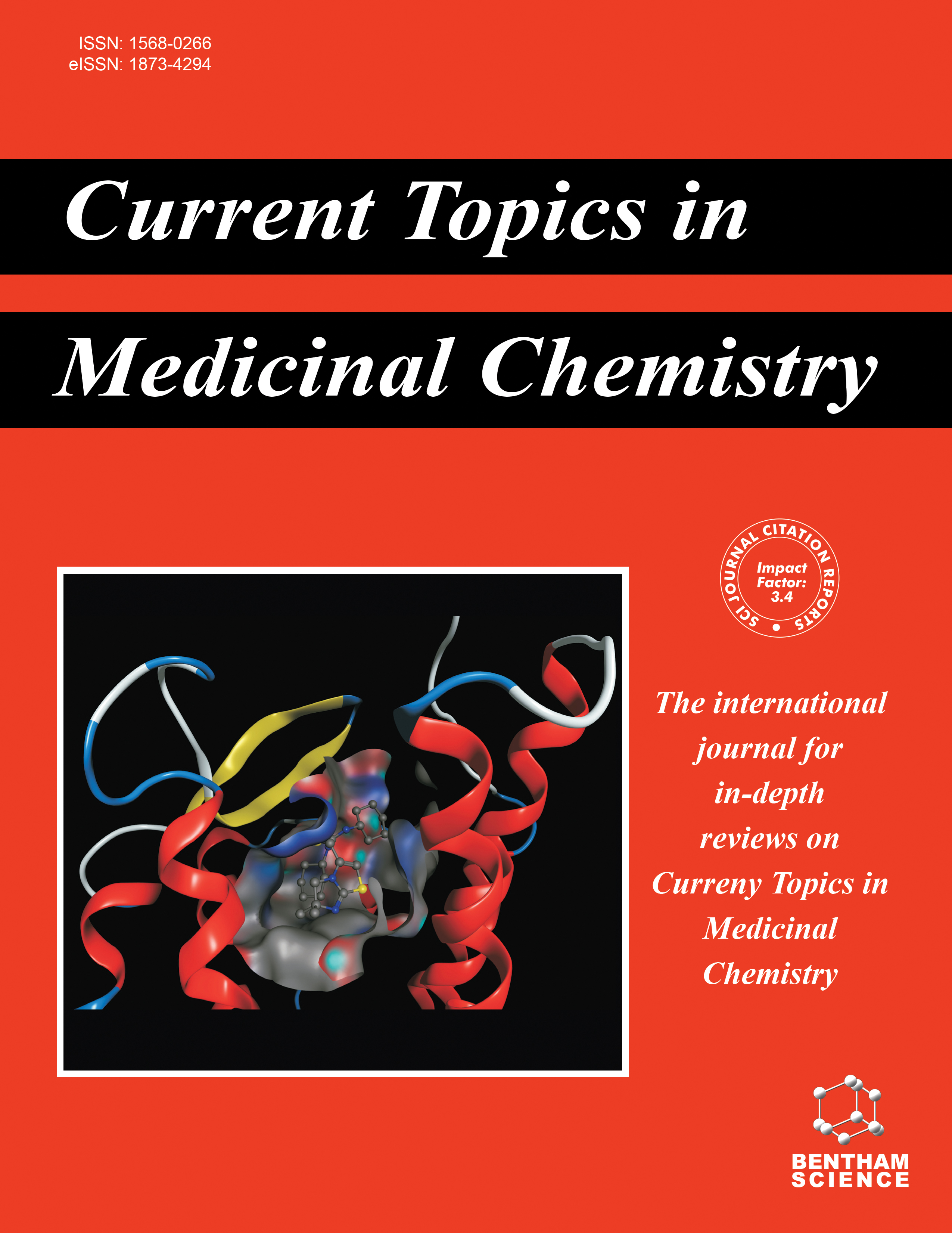- Home
- A-Z Publications
- Current Topics in Medicinal Chemistry
- Previous Issues
- Volume 22, Issue 6, 2022
Current Topics in Medicinal Chemistry - Volume 22, Issue 6, 2022
Volume 22, Issue 6, 2022
-
-
A Comprehensive Review on Current Perspectives of Flavonoids as Antimicrobial Agent
More LessAuthors: Tanya Gupta, Ritu Kataria and Satish SardanaFlavonoids are the secondary plant metabolites with diversities of pharmacological activities like antioxidant, anticancer, anti-inflammatory, hepatoprotective, free radical scavenging activity and antiviral activities. Flavonoids have also been proved as a major contributor to an antimicrobial phytochemical. Being the major substituent of antibiotics, today flavonoids have attained great attention as there is an incr Read More
-
-
-
Structural-activity Relationship of Metallo-aminoquines as Next Generation Antimalarials
More LessAuthors: Mohammad Abid, Shailja Singh, Timothy J. Egan and Mukesh C. JoshiApicomplexian parasite of the genus Plasmodium is the causative agent of malaria, one of the most devastating, furious and common infectious disease throughout the world. According to the latest World malaria report, there were 229 million cases of malaria in 2019 majorly consist of children under 5 years of age. Some of known analogues viz. quinine, quinoline-containing compounds have been used for last century i Read More
-
-
-
Formulating the Structural Aspects of Various Benzimidazole Cognates
More LessBackground: Benzimidazole derivatives are widely used in clinical practice as potential beneficial specialists. Recently, the neuroprotective effect of derivatives of benzimidazole moiety has also shown positive outcomes. Objectives: To develop favourable molecules for various neurodegenerative disorders using the versatile chemical behaviour of the benzimidazole scaffold. Methods: About 25 articles were collected that discussed Read More
-
-
-
A Medicinal Chemist’s Perspective Towards Structure Activity Relationship of Heterocycle Based Anticancer Agents
More LessAuthors: Bhupender Nehra, Bijo Mathew and Pooja A. ChawlaAim: This paper aims to describe the structure activity relationship of heterocyclic derivatives with multi-targeted anticancer activity. Objectives: With the following goals in mind, this review tries to describe significant recent advances in the medicinal chemistry of heterocycle-based compounds: (1) To shed light on recent literature focused on heterocyclic derivatives' anticancer potential; (2) To discuss recent advance Read More
-
Volumes & issues
-
Volume 25 (2025)
-
Volume 24 (2024)
-
Volume 23 (2023)
-
Volume 22 (2022)
-
Volume 21 (2021)
-
Volume 20 (2020)
-
Volume 19 (2019)
-
Volume 18 (2018)
-
Volume 17 (2017)
-
Volume 16 (2016)
-
Volume 15 (2015)
-
Volume 14 (2014)
-
Volume 13 (2013)
-
Volume 12 (2012)
-
Volume 11 (2011)
-
Volume 10 (2010)
-
Volume 9 (2009)
-
Volume 8 (2008)
-
Volume 7 (2007)
-
Volume 6 (2006)
-
Volume 5 (2005)
-
Volume 4 (2004)
-
Volume 3 (2003)
-
Volume 2 (2002)
-
Volume 1 (2001)
Most Read This Month
Article
content/journals/ctmc
Journal
10
5
false
en


